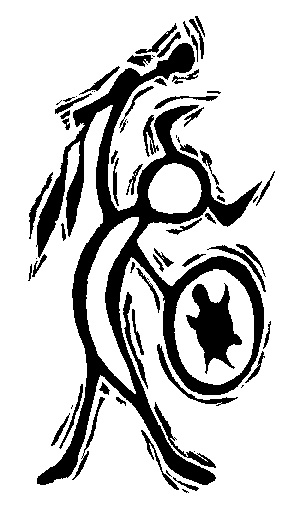The word shaman comes from the language of the Tungus of North-Central Asia. It came into use in English via Russian. Shamanism, the world’s oldest healing tradition, is found in all cultures on Earth.. With the aid of rhythmic drumming and chanting, the shaman enters a very deep trance or vision state. This vision state frees the shaman’s consciousness from the body, allowing it to “fly” into the realms the spirits inhabit, and to experience these “Otherworlds” with all the senses of the ordinary physical realm.
There are a number of relatively common practices and experiences in traditional shamanism which are being investigated by modern researchers. While the older traditional practices are ignored by some researchers, others have begun to explore these older techniques. The emergence of the new field of the “anthropology of consciousness” and the establishment of Transpersonal Psychology as a “Fourth Force” in psychology have opened up the investigation of research into the nature and history of consciousness in ways not previously possible.
 In order to journey to the other dimensions of existence a Shaman induces an altered state of consciousness in himself similar to a state of self-hypnosis called a state of flow. While in this state of flow, or Shamanic Trance, he is in complete control. He is able to take his consciousness and subtle bodies into nonphysical reality where he journeys to the world of spirits, gains information, retrieves souls, and makes subtle changes in reality which may affect his/her physical world.
In order to journey to the other dimensions of existence a Shaman induces an altered state of consciousness in himself similar to a state of self-hypnosis called a state of flow. While in this state of flow, or Shamanic Trance, he is in complete control. He is able to take his consciousness and subtle bodies into nonphysical reality where he journeys to the world of spirits, gains information, retrieves souls, and makes subtle changes in reality which may affect his/her physical world.
The particular form of altered consciousness associated with shamanism is called a soul journey, soul flight, or some other similar term referring to the departure of some aspect of the self, particularly one’s soul or spirit, from the body in order to journey to the spirit world. This shamanic soul journey is distinct from the possession experiences associated with the altered states of consciousness of more complex societies. Possession involves experiences in which a person’s sense of personal consciousness and volition is replaced by the controlling influences of a spirit entity who possesses the person’s body and controls it (Bourguignon 1976).
This divine control of one’s person is not typically associated with shamanic practice. The shaman remains aware of self during the soul journey, while possessed people typically report a lack of awareness of the experience following possession. The shaman’s awareness during the soul journey reflects the active engagement in altered states through early ritual practices, while the possessed person’s sense of external dominance by the possessing entity reflects influences external to the self, such as endocrine imbalances from nutritional deficiencies and dissociate experiences induced by oppressive social conditions.
The shaman is an expert in controlling preternatural experiences. He or she can induce states of altered consciousness in order to be able to communicate with transcendental realities, usually in the form of ecstasy or enthusiasm.
shamanicvision.com
www.shamanicvision.com

